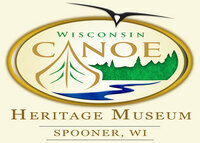 For many a young person throughout the 1960s and 70s, making your own recreational equipment was the mantra of the day. Lacking the financial means to purchase finished equipment, they made their own from kits that were available from popular brands of the day, like Heathkit radios, Frostline clothing and camping gear, and in the case of Tim Miller and his brother Steve of Florence, Wisconsin, Trailcraft Canoes. Tim has now donated his square stern “Trailblazer Canoe” to the Wisconsin Canoe Heritage Museum, along with the original purchase documents, including twenty-five pages or assembly instructions and a “Canoeing Basics” pamphlet. Tim built the canoe in 1966 along with his brother Steve from a kit they purchased from Trailcraft of Glasco, Kansas, for $58.88. “I would like to take a camping trip with you and dad, up into Canada with the station wagon, tent, and boat in tow. We could have a real cool time just fishing and hiking for a week or so,” Steve wrote his brother to entice him to join in building a canoe with him for a “summer project.” The canoe was used twice and then stored in a garage for the next 56 years. In September 2022 Tim met with WCHM Executive Director Jed Malischke to transfer the canoe to the museum as a representation of the canoe kits that opened the door to many a young person’s adventurism.  Just as the aluminum canoe replaced the wooden canoe at the end of the Second World War, in the 1970s plastics technology transformed the canoe industry and made the aluminum canoe obsolete. Uniroyal had devised a vulcanized sheet laminate at their R&D facility in Stoughton, Wisconsin, which they envisioned for use in the automotive industry. But it was never applied there, and eventually became Royalex, of which tens of thousands of canoes were fabricated by myriad American manufacturers until the mid-2000s. |
Archives
July 2024
Categories |

 RSS Feed
RSS Feed